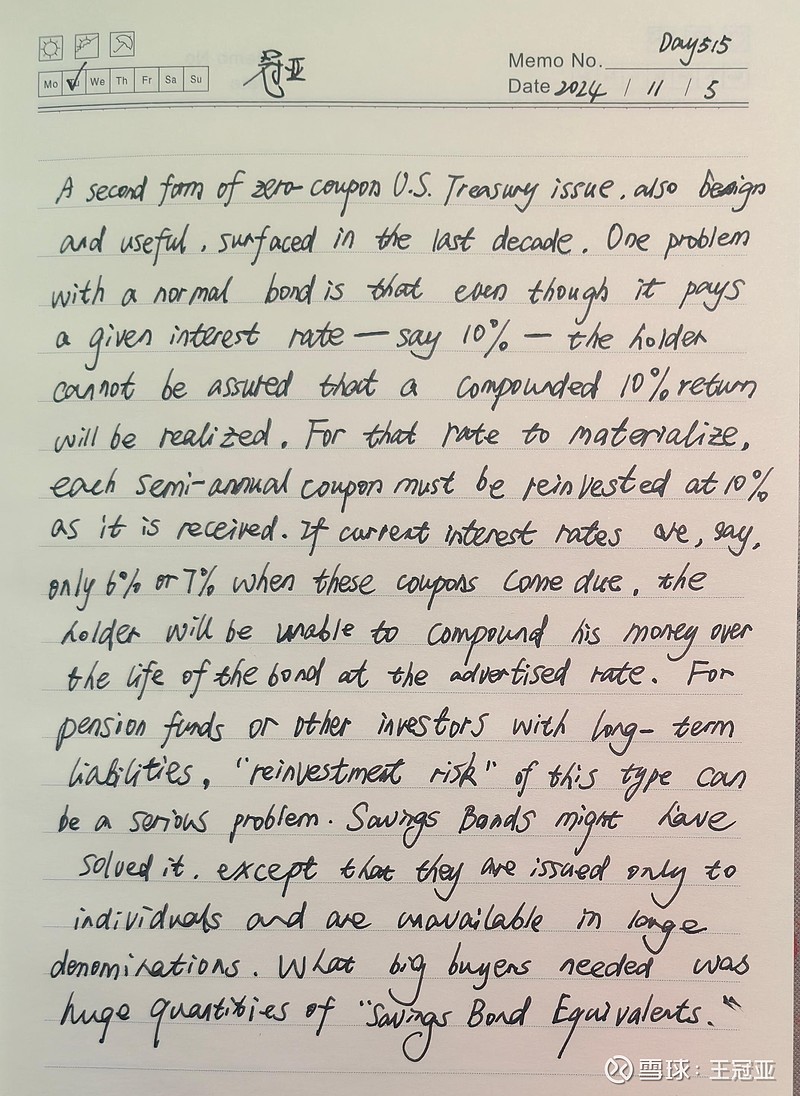来源:雪球App,作者: 王冠亚,(https://xueqiu.com/4525540121/311116484)
巴菲特致股东的信原文精读Day515:
原文:A second form of zero-coupon U. S. Treasury issue, also benign and useful, surfaced in the last decade. One problem with a normal bond is that even though it pays a given interest rate—say 10%—the holder cannot be assured that a compounded 10% return will be realized. For that rate to materialize, each semi-annual coupon must be reinvested at 10% as it is received. If current interest rates are, say, only 6% or 7% when these coupons come due, the holder will be unable to compound his money over the life of the bond at the advertised rate. For pension funds or other investors with long-term liabilities, “reinvestment risk” of this type can be a serious problem. Savings Bonds might have solved it, except that they are issued only to individuals and are unavailable in large denominations. What big buyers needed was huge quantities of “Savings Bond Equivalents.”(1989)
释义:1.“benign”意为“温和的”;
2.“pension”意为“退休金”。
精译:第二种形式的零息美国国债,过去10年才出现,也是优质、有用的投资工具。普通债券有个问题,即使它支付了给定的利息,比如10%,持有人也不能保证会实现10%的复合回报率。要想实现这一回报率,每半年收到一次的息票必须在收到时按10%的利率进行再投资。如果这些息票到期时,当前的利率仅为6%或7%,持有人将无法在债券的有效期内以宣传的利率再投资。对于有长期负债的养老基金或其他投资者来说,这类“再投资风险”可能是个严重的问题。美国储蓄债券可能已经解决了这个问题,但它们只能面向个人发行,而且不能大额发行。大户需要的是大量的储蓄债券替代品。(1989)
心得:普通债券最大的问题是“再投资风险”,就像买股票一样,哪怕买得不贵,哪怕企业的RoE常年保持20%,也不能保证投资者一定能获得20%的复合收益率。因为企业会分红给个人,而个人拿到分红后不一定能继续找到20%的投资机会。
手抄:

朗读:大家请自由发挥,哈哈哈!大家的手抄原文,也可以在评论区上传打卡。

